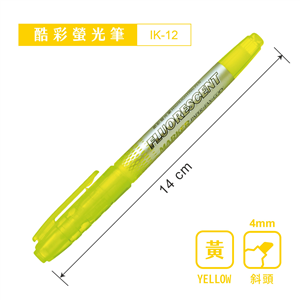 收藏
收藏

 二手徵求有驚喜
二手徵求有驚喜
定價:NT$ 2125
優惠價: 93 折, NT$ 1976
運送方式:超商取貨、宅配取貨
銷售地區:全球
訂購後,立即為您進貨




In 648 CE, Tang imperial authorities collected every copy of the Writ of the Three Sovereigns (Sanhuang wen) from the four corners of the empire and burned them. The formidable talismans at its core were said not only to extend their owners’ lifespan and protect against misfortune, but also propel them to stratospheric heights of power, elevating them to the rank of high minister or even emperor. Only two or three centuries earlier, this controversial text was unknown in most of China with the exception of Jiangnan in the south, where it was regarded as essential local lore. In the span of a few generations, the Writ of the Three Sovereigns would become the cornerstone of one of the three basic corpora of the Daoist Canon, a pillar of Daoism—and a perceived threat to the state.
This study, the only book-length treatment of the Writ of the Three Sovereigns in any language, traces the text’s transition from local tradition to empire-wide institutional religion. The volume begins by painting the social and historical backdrop against which the scripture emerged in early fourth century Jiangnan before turning to its textual history. It reflects on the work’s centerpiece artifacts, the potent talismans in celestial script, as well as other elements of its heritage, namely alchemical elixirs and “true form” diagrams. During the fifth and sixth centuries, with Daoism coalescing into a formal organized religion, the Writ of the Three Sovereigns took on a symbolic role as a liturgical token of initiation while retaining its straightforward language of sovereignty and strong political overtones, which eventually led to its prohibition. The writ endured, however, and later experienced a revival as its influence spread as far as Japan. Despite its central role in the development of institutional Daoism, the Writ of the Three Sovereigns has remained an understudied topic in Chinese history. Its fragmentary textual record combined with the esoteric nature of its content have shrouded it in speculation. This volume provides a lucid reconstruction of the text’s hidden history and enigmatic practices while shedding light on its contributions to the religious landscape of medieval China.
作者簡介:
Dominic Steavu is associate professor of Chinese religions and Chinese Buddhism at the University of California, Santa Barbara.
退換貨說明:
會員均享有10天的商品猶豫期(含例假日)。若您欲辦理退換貨,請於取得該商品10日內寄回。
辦理退換貨時,請保持商品全新狀態與完整包裝(商品本身、贈品、贈票、附件、內外包裝、保證書、隨貨文件等)一併寄回。若退回商品無法回復原狀者,可能影響退換貨權利之行使或須負擔部分費用。
訂購本商品前請務必詳閱退換貨原則。 收藏
收藏

 二手徵求有驚喜
二手徵求有驚喜
優惠價: 93 折, NT$ 1976 NT$ 2125
運送方式:超商取貨、宅配取貨
銷售地區:全球
訂購後,立即為您進貨
In 648 CE, Tang imperial authorities collected every copy of the Writ of the Three Sovereigns (Sanhuang wen) from the four corners of the empire and burned them. The formidable talismans at its core were said not only to extend their owners’ lifespan and protect against misfortune, but also propel them to stratospheric heights of power, elevating them to the rank of high minister or even emperor. Only two or three centuries earlier, this controversial text was unknown in most of China with the exception of Jiangnan in the south, where it was regarded as essential local lore. In the span of a few generations, the Writ of the Three Sovereigns would become the cornerstone of one of the three basic corpora of the Daoist Canon, a pillar of Daoism—and a perceived threat to the state.
This study, the only book-length treatment of the Writ of the Three Sovereigns in any language, traces the text’s transition from local tradition to empire-wide institutional religion. The volume begins by painting the social and historical backdrop against which the scripture emerged in early fourth century Jiangnan before turning to its textual history. It reflects on the work’s centerpiece artifacts, the potent talismans in celestial script, as well as other elements of its heritage, namely alchemical elixirs and “true form” diagrams. During the fifth and sixth centuries, with Daoism coalescing into a formal organized religion, the Writ of the Three Sovereigns took on a symbolic role as a liturgical token of initiation while retaining its straightforward language of sovereignty and strong political overtones, which eventually led to its prohibition. The writ endured, however, and later experienced a revival as its influence spread as far as Japan. Despite its central role in the development of institutional Daoism, the Writ of the Three Sovereigns has remained an understudied topic in Chinese history. Its fragmentary textual record combined with the esoteric nature of its content have shrouded it in speculation. This volume provides a lucid reconstruction of the text’s hidden history and enigmatic practices while shedding light on its contributions to the religious landscape of medieval China.
作者簡介:
Dominic Steavu is associate professor of Chinese religions and Chinese Buddhism at the University of California, Santa Barbara.
退換貨說明:
會員均享有10天的商品猶豫期(含例假日)。若您欲辦理退換貨,請於取得該商品10日內寄回。
辦理退換貨時,請保持商品全新狀態與完整包裝(商品本身、贈品、贈票、附件、內外包裝、保證書、隨貨文件等)一併寄回。若退回商品無法回復原狀者,可能影響退換貨權利之行使或須負擔部分費用。
訂購本商品前請務必詳閱退換貨原則。
※ 二手徵求後,有綁定line通知的讀者,
該二手書結帳減5元。(減5元可累加)
請在手機上開啟Line應用程式,點選搜尋欄位旁的掃描圖示
即可掃描此ORcode
|
||||||||||||||||||
|
||||||||||||||||||
|
||||||||||||||||||













